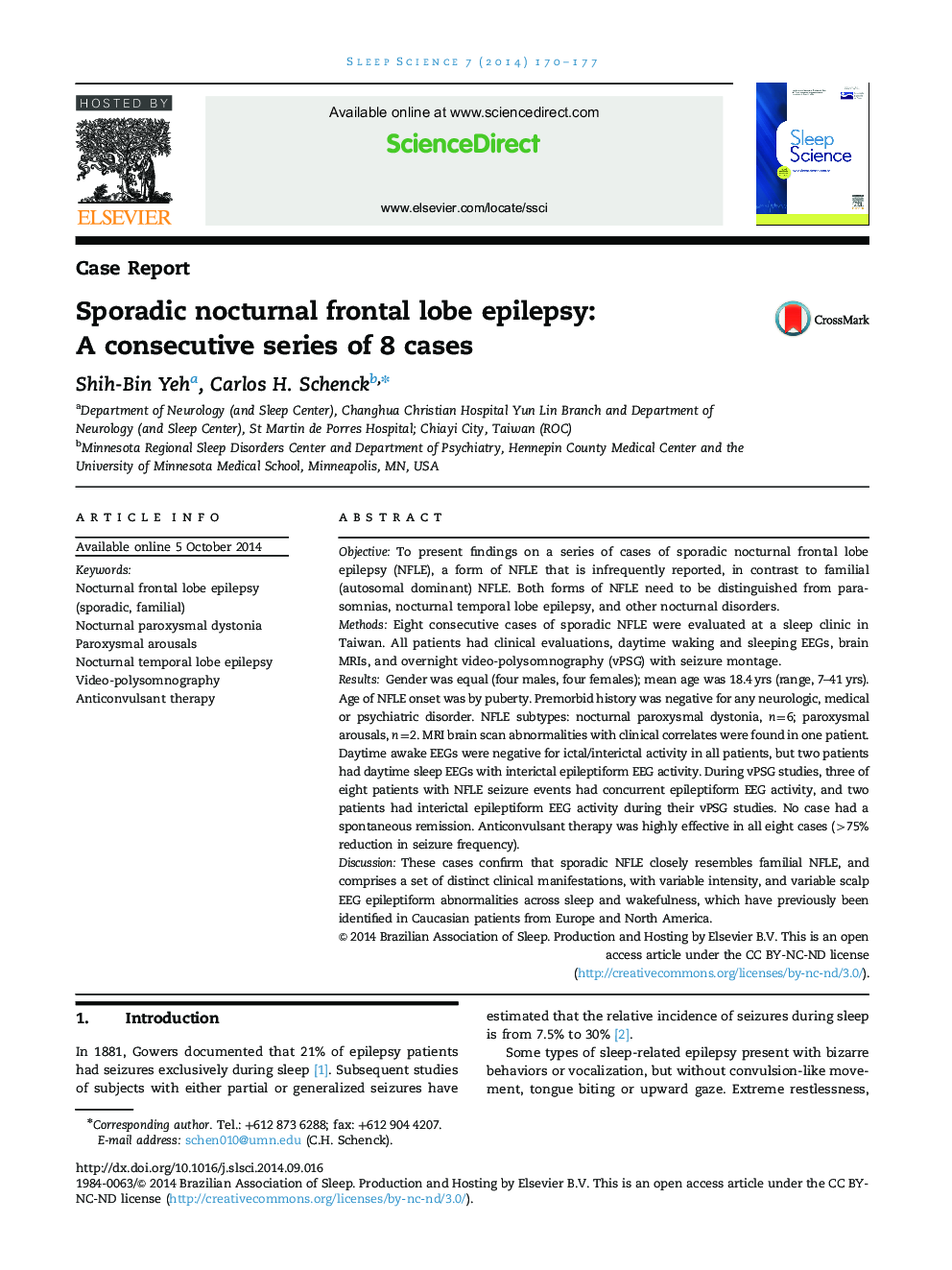| Article ID | Journal | Published Year | Pages | File Type |
|---|---|---|---|---|
| 3026658 | Sleep Science | 2014 | 8 Pages |
ObjectiveTo present findings on a series of cases of sporadic nocturnal frontal lobe epilepsy (NFLE), a form of NFLE that is infrequently reported, in contrast to familial (autosomal dominant) NFLE. Both forms of NFLE need to be distinguished from parasomnias, nocturnal temporal lobe epilepsy, and other nocturnal disorders.MethodsEight consecutive cases of sporadic NFLE were evaluated at a sleep clinic in Taiwan. All patients had clinical evaluations, daytime waking and sleeping EEGs, brain MRIs, and overnight video-polysomnography (vPSG) with seizure montage.ResultsGender was equal (four males, four females); mean age was 18.4 yrs (range, 7–41 yrs). Age of NFLE onset was by puberty. Premorbid history was negative for any neurologic, medical or psychiatric disorder. NFLE subtypes: nocturnal paroxysmal dystonia, n=6; paroxysmal arousals, n=2. MRI brain scan abnormalities with clinical correlates were found in one patient. Daytime awake EEGs were negative for ictal/interictal activity in all patients, but two patients had daytime sleep EEGs with interictal epileptiform EEG activity. During vPSG studies, three of eight patients with NFLE seizure events had concurrent epileptiform EEG activity, and two patients had interictal epileptiform EEG activity during their vPSG studies. No case had a spontaneous remission. Anticonvulsant therapy was highly effective in all eight cases (>75% reduction in seizure frequency).DiscussionThese cases confirm that sporadic NFLE closely resembles familial NFLE, and comprises a set of distinct clinical manifestations, with variable intensity, and variable scalp EEG epileptiform abnormalities across sleep and wakefulness, which have previously been identified in Caucasian patients from Europe and North America.
